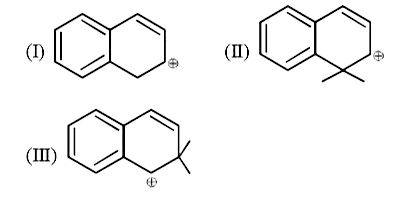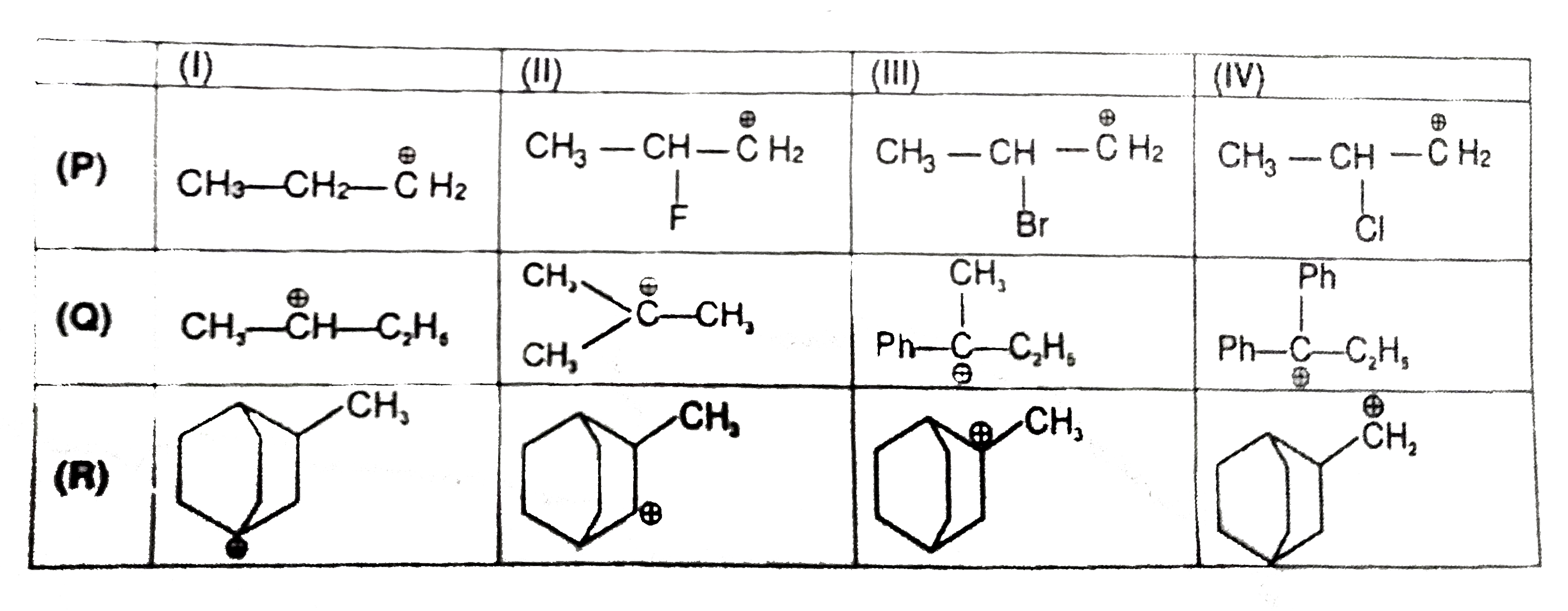Arrange the following carbocation in decreasing order of stability.

A
I>III>II>IV
B
II>I>III>IV
C
IV>III>II>I
D
III>IV>II>I
Video Solution
Text Solution
The correct Answer is:B
II is stabilised by resonance effect, most stable followed by I which is stabilised only by inductive and hyperconjugation effect. IV is least stable due to greater electron withdrawing power of −NO2 than −CN.
|
Updated on:21/07/2023
Topper's Solved these Questions
- BOOK - A2ZCHAPTER - SOME BASIC PRINCIPALS OF ORGANIC CHEMISTRYEXERCISE - Structure Isomerism28videos
SOME BASIC PRINCIPALS OF ORGANIC CHEMISTRY
- BOOK - A2ZCHAPTER - SOME BASIC PRINCIPALS OF ORGANIC CHEMISTRYEXERCISE - Tautomerism16videos
SOME BASIC PRINCIPALS OF ORGANIC CHEMISTRY
- BOOK - A2ZCHAPTER - SOME BASIC PRINCIPALS OF ORGANIC CHEMISTRYEXERCISE - Acid And Basic Strength29videos
SOME BASIC PRINCIPALS OF ORGANIC CHEMISTRY
- BOOK - A2ZCHAPTER - SOME BASIC CONCEPTS OF CHEMISTRYEXERCISE - Section D - Chapter End Test30videos
SOME BASIC CONCEPTS OF CHEMISTRY
- BOOK - A2ZCHAPTER - STATES OF MATTEREXERCISE - Section D - Chapter End Test30videos
STATES OF MATTER
Similar Questions
Knowledge Check
- Question 1 - Select One
Arrange the following carbanions in decreasing order of stability:
 AIII>I>IV>IIBIII>II>I>IVCI>III>II>IVDIII>I>II>IV
AIII>I>IV>IIBIII>II>I>IVCI>III>II>IVDIII>I>II>IV - Question 2 - Select One
Arrange the following carbanions in increasing order of stability:
 AIII>VI>I>IIBI>III>IV>IICI>II>III>IVDI>IV>III>II
AIII>VI>I>IIBI>III>IV>IICI>II>III>IVDI>IV>III>II - Question 3 - Select One
Arrange following carbocation in the decreasing order of stability
(i) CH3−+CH−CH3
(ii) CH3−+CH−O−CH3
(iii) CH3−+CH−CO−CH3A(iii)>(ii)>(i)B(i)>(ii)>(iii)C(i)>(ii)>(iii)D(i)<(ii)<(iii)
Arrange the given carbocation in decreasing order of stability :

The correct choice is :View SolutionArrange the following free radicals in decreasing order of stability :
 View Solution
View SolutionArrange the following gem diols in decreasing order of stability :
 View Solution
View SolutionArrange the following carbocations in the increasing order of their stability.
 View Solution
View SolutionArrange the following radicals in decreasing order of their stability.
 View Solution
View Solution



